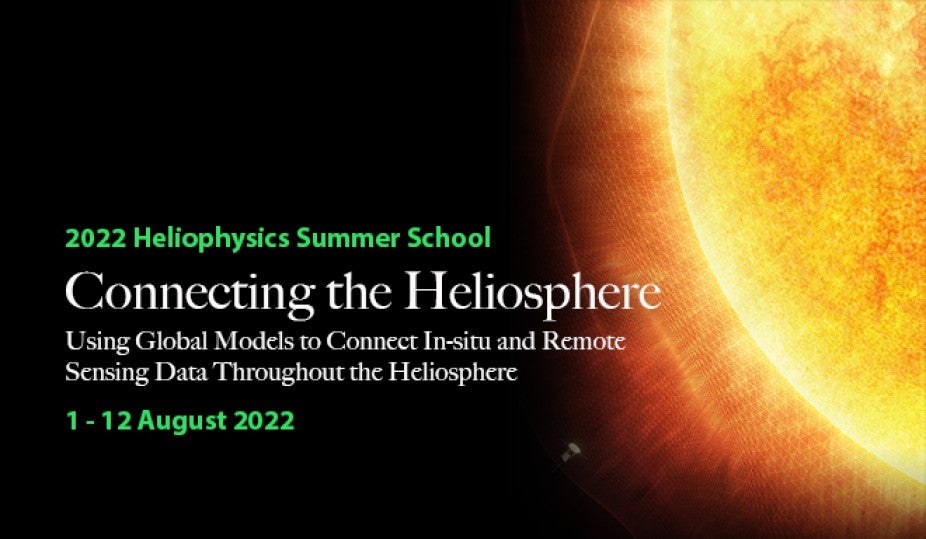Summer School Shines a Light on the Interdisciplinary Nature of the Sun
CPAESS managed another very successful year of the NASA Heliophysic’s Summer School from August 1-12, 2022. Its purpose is to immerse students into the interdisciplinary nature of heliophysics. This summer, the school was again held virtually using video instruction, Slack, office hours with students, and a variety of digital tools. This year’s theme was “Connecting the Heliosphere: Using Global Models to Connect In-situ and Remote Sensing Data Throughout the Heliosphere.”
This competitive program, sponsored by NASA’s Living With A Star, focuses on the interdisciplinary exploration of the physical processes connecting the Sun, solar system planets and interplanetary space. Over eight days, students examine topics ranging from the solar dynamo to the heliosphere’s interaction with the interstellar medium. Space weather impacts and observational technologies are also studied. It strives to show the interdisciplinary nature of heliophysics to the graduate, and 1st and 2nd year postdoctoral students who participate in the program.

This year the summer school was led by Dr. Nick Gross, Boston University; Mark Moldwin, University of Michigan; and Christina Cohen, California Institute of Technology. Overseeing the school was NASA’s Lead Program Scientist for its Living With A Star program, Dr. Madhulika Guhathakurta. This year 34 students participated in the Heliophysics Summer School. The participants were from 11 time zones. It consisted of a lecture series which included a core set of talks covering the fundamentals of Heliophysics and the underlying plasma physics using a lecture tutorial approach.
In addition, insights into the relationship between global models and observations were discussed with students. The lectures were supplemented with hands-on laboratory exercises that explore the fundamentals of the Sun-Earth system and compare the output of various models to observations. The aim of the summer school is to provide students with the background and understanding needed to do research and make discoveries about the interconnected Heliophysics system in their professional careers. Another goal is for participants to build a network of colleagues from the summer school.

A portion of the online community that met for the NASA Heliophysics Summer School this past August.
This year’s Summer School had a robust agenda of a great breadth of information. Material was drawn from the textbook Principles of Heliophysics: a textbook on the universal processes behind planetary habitability, available online with free access. They also made use of model results from the NASA Community Coordinated Modeling Center (CCMC), and had invited guests and panelists discuss various aspects of this growing field with the students, along with numerous group discussions. The Heliophysics Summer School has produced a great many resources for the public and educators over the years including lecture videos, textbooks, labs, problem sets, and a host of online resources.
The next NASA Heliophysics Summer School will open for applications on December 1, 2022 and the deadline will be March 1, 2023. The summer of 2023 will have a new format consisting of both a virtual component, and an in-person session in Boulder, Colorado. Please watch the CPAESS website and the Heliophysics Summer School webpage for an announcement shortly!









